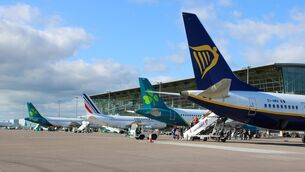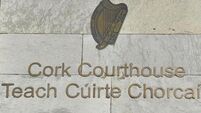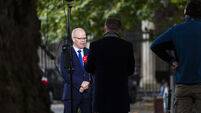Pound dips sharply against dollar amid rate cut rumours
The British economy, Europe’s second-largest, grew at the slowest pace in more than a decade in the first quarter as consumer spending slowed and manufacturing contracted. British manufacturing production fell 2.1% in May from the same period a year before, and 0.2% from April, a report showed.
The possibility of a cut this week is “a real near-term risk to the pound”, said Aziz McMahon, a currency analyst at ABN Amro in London. The market is split over the likelihood of a reduction, with ABN Amro expecting BOE policy makers to lower the key rate in August, he said.
The British currency traded at $1.6477 in mid afternoon trade in London from $1.6665 on Friday. That pared its gain versus the dollar this year to 2.3%. Against the euro, the pound was at 68.87p from 68.96p on Friday.
“If they do cut you could see the pound suffer a little,” said Lee Ferridge, head of global currency strategy at Rabobank in London.
Not all reports have pointed to weakness in the economy, suggesting any interest rate-related drop in the pound may be temporary, analysts said.
British service businesses expanded and shop prices rose in June, reports last week showed. By contrast, the European Commission said last week there are “significant risks” to a rebound in the economy of the eurozone in the second half.
British interest rates are also higher than those in Europe or the US, ensuring demand for pounds remains robust, analysts said. The benchmark rate in the US is 1% and the key European rate is 2%.
Meanwhile, one of Britain’s biggest business organisations said the Bank of England’s new governor Mervyn King should persuade policy makers to cut borrowing costs when he chairs the rate-setting committee for the first time on Thursday.
The Confederation of British Industry and the Engineering Employers Federation said growth in the British economy Europe’s second-biggest economy is faltering and may stall without further stimulus.















